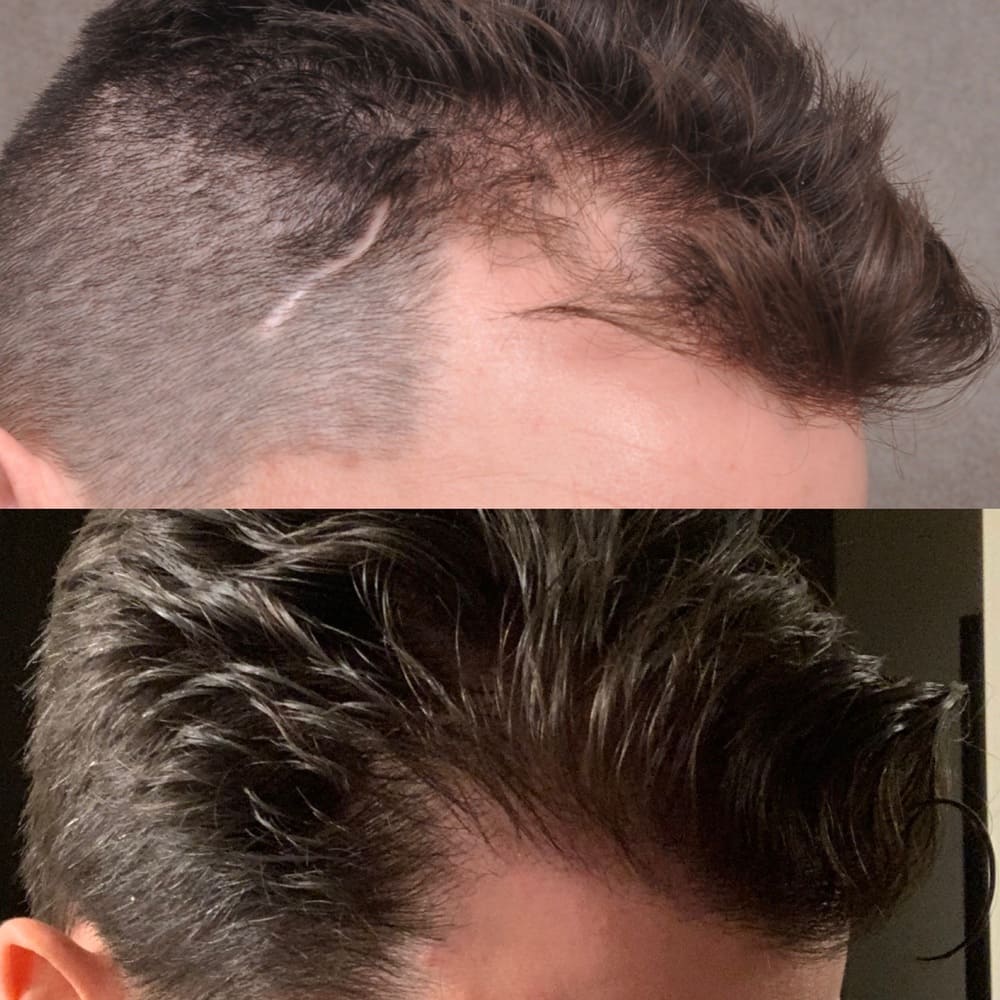Hair transplantation is generally considered to be an aesthetic procedure. It is a surgical procedure that is performed to improve the appearance of the hair and restore hair loss. While hair loss can be caused by medical conditions or certain medications, hair transplantation is typically not considered a medical necessity. However, hair loss can have significant psychological and social effects on an individual, and hair transplantation can help to improve self-esteem and quality of life. Some insurance plans may cover hair transplantation if it is deemed medically necessary, such as in cases of scarring alopecia or certain types of congenital hair loss. It is important to check with your insurance provider to determine if hair transplantation is covered under your plan.
Does the transplanted hair look natural?

For the transplanted hair to look natural, the operation must be performed by specialist doctors and specialists. In hair transplantation operations performed by experienced specialists in the right health institution, naturalness can be achieved at a level that will not be obvious. We aim at maximum density in hair with Sapphire and DHI techniques that we apply in hair transplantation. An average person has 100 hairs per square centimeter. With new techniques, we can fit 80 follicles, that is, hair strands, in 1 cm square. It is tried to obtain the closest result to the patient’s dream appearance. While doing this, the forehead line is taken into consideration first.
What are the factors affecting the naturalness of the transplanted hair?
There are several factors that can affect the naturalness of the transplanted hair:
- Skill and experience of the surgeon: The skill and experience of the surgeon is an important factor in achieving natural-looking results. A surgeon who is well-trained and experienced in hair transplantation procedures will be more likely to produce natural-looking results.
- Technique used: The technique used in the hair transplantation procedure can also affect the naturalness of the transplanted hair. Some techniques, such as Follicular Unit Extraction (FUE), tend to produce more natural-looking results compared to other techniques.
- Hair characteristics: The characteristics of the transplanted hair, such as color, texture, and density, can also affect the naturalness of the results. The surgeon should try to match the transplanted hair as closely as possible to the patient’s existing hair.
- Post-operative care: Proper post-operative care is also important in achieving natural-looking results. It is important to follow the instructions provided by the surgeon to ensure that the transplanted hair grows in properly and looks natural.
- Hair styling: The way the transplanted hair is styled can also affect the naturalness of the results. It is important to style the transplanted hair in a way that looks natural and blends in with the existing hair.
How to determine the hairline?

The hairline is a personal anatomical line. It is determined according to the natural hair border from the area where the forehead texture ends and the hair texture begins. The most important point in hair transplantation is to pay attention to the forehead muscle. The hairline can be adjusted as desired without touching the forehead muscle and without damaging the mimic muscles. The hairline can be changed without touching the forehead line in people with wide foreheads or those whose hair is very empty on both sides. The desired shape can be made according to the patient’s face type, hairstyle, previous hair loss and forehead muscle, and the condition of the balding skin. If the patient has requested a hair type that is not suitable for him, he is informed about the medical obligations, the anatomical structure of his face and possible results, and the most suitable front line and hairstyle are determined.
Which factors effect to determine hairline?
The hairline is an important aspect of the hair transplantation procedure, as it can greatly affect the overall appearance of the transplanted hair. The hairline should be natural-looking and appropriate for the patient’s age, facial structure, and desired look.
There are several factors that should be considered when determining the hairline:
- Age: The hairline should be appropriate for the patient’s age. For example, a very low hairline may not be suitable for an older patient.
- Facial structure: The hairline should be in balance with the patient’s facial structure. For example, a hairline that is too high may not be suitable for someone with a short forehead.
- Desired look: The patient’s desired look should also be considered when determining the hairline. The patient should discuss their goals and expectations with the surgeon to ensure that the result meets their needs.
- Growth patterns: The natural growth patterns of the patient’s hair should also be considered when determining the hairline. The surgeon should try to mimic the patient’s natural hairline as closely as possible.
- Hair density: The density of the transplanted hair should also be considered when determining the hairline. The surgeon should ensure that the transplanted hair looks natural and blends in with the existing hair.
How painful is hair transplant?

The pain associated with a hair transplant procedure can vary depending on the specific technique used, the individual’s pain tolerance, and the use of pain management techniques.
In general, hair transplant procedures are performed using local anesthesia to numb the area of the scalp where the procedure is being performed. This can help to minimize discomfort during the procedure.
After the procedure, some individuals may experience mild discomfort, swelling, or redness in the treatment area. These side effects are usually temporary and can be managed with over-the-counter pain medication and cold compresses.
It is important to keep in mind that hair transplantation is a surgical procedure, and as with any surgery, there are some risks involved. These risks should be carefully weighed against the potential benefits of the procedure before making a decision. If you are considering a hair transplant, it is important to discuss your specific situation and expectations with a qualified healthcare provider to determine the potential risks and benefits of the procedure for you. They will be able to provide you with more information on the likely level of discomfort associated with the procedure and help you to prepare for the recovery process.




0 Comments